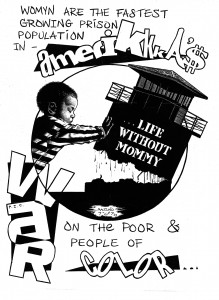Tearing Children of Color Away From Their Families is an Old and Continuing Amerikkkan Practice (2018)
Several months ago U.S. officials announced a depraved “zero-tolerance” policy for migrants entering the U.S. from what Donald Trump called “shithole countries” south of the border, even if they be fleeing deadly conditions as refugees—a status protected by international law.
As a deterrent to entry by these people of color, the government instituted a policy of separating the migrant’s children from their parents and confining them. Nearly 3,000 children were torn from their families as a result.
This overtly fascist pronouncement and practice was met with immediate public outrage and protest as hundreds of thousands took to the streets, leading the U.S. government into a series of desperate maneuvers attempting to lyingly deny having announced and enforced the policy.
Even after a federal court ordered the families reunited on June 26, hundreds of migrant children have not been reunited. Many of them are likely to be permanently orphaned.
But what is generally unknown to those outraged by this situation is the policy of taking children of color from their families as “punishment,” “deterrence,” and even as policies of deliberate genocide, are a common official practice going back to Amerika’s earliest years and continuing ‘till the present. Its evil purposes and effects are therefore well known and intentional.
The earliest examples were applied against Native Americans in efforts to eradicate them and to destroy their cultures and ways of life. Also, against Black slaves to deter and punish those who rebelled and resisted enslavement, and as part of the slaveowners’ profit interests taking precedence over the interests of the enslaved.
In the case of Natives, their children were routinely taken from their families at the earliest possible age and placed with white families and in boarding schools where practicing their customs and speaking their languages were forbidden, and they were denied all contact with their families.
The traumatic effects of this practice are still widely felt by Amerindian communities today.
In the case of African slaves, the selling of children and parents away from each other was one of the most common, heartrending, and dreaded antebellum practices.
Today, the practice continues where communities of color are especially hard hit and victimized by racially targeted mass imprisonment which similarly rips families apart and separates children at the earliest ages from their parents, with devastating effects on those communities.
Often the suffering is greatest and lasts a lifetime for the affected children, many of whom suffer and never recover from a sense of having been abandoned by their parents.
One of the more visceral accounts of such a story was told in Assata Shakur’s autobiography, when she described her young daughter’s reaction and pain at her mother’s inability to leave with her following a prison visit. Like many imprisoned parents, I too have endured the pain of having been separated from and attempting relentlessly to locate my own children whom I lost contact with upon my imprisonment 28 years ago.
So while U.S. officials are busy attempting to press forward the lie that attacking “marginalized” families by separating their children and parents is beneath them, only a cursory looks at Amerika’s past and continuing policies toward people of color demonstrates the exact opposite.
In this and many other respects U.S. prisoners and our communities have a special affinity and much in common with detained migrants and their children and Amerindian communities.
The practice of targeting families in this manner must be exposed, opposed, and abolished in all its continuing forms.
Dare to Struggle, Dare to Win!
All Power to the People!


Leave a Reply